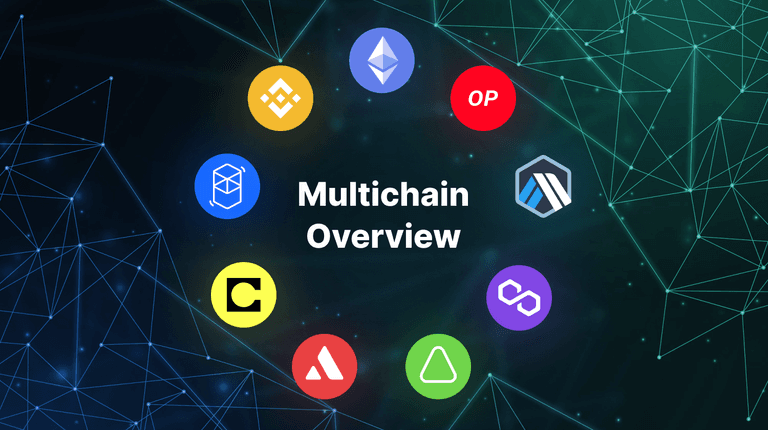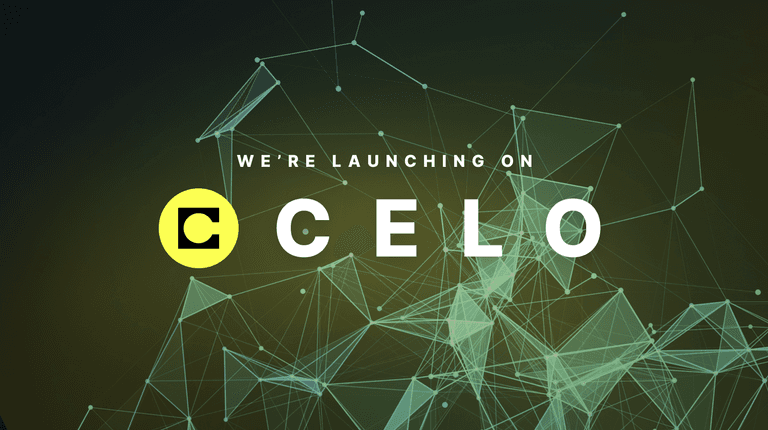Celo
Discover tokens from Celo – a low-cost blockchain platform for DeFi and apps, with a stablecoin, built-in ID verification, and a mobile-friendly wallet.
All You Need to Know About Celo
Celo Network is a decentralized platform for creating and managing digital assets and smart contracts. It aims to provide an open and inclusive financial system that is accessible to anyone with a smartphone. Celo Network leverages blockchain technology to create a global payment system that is fast, secure, and affordable. The platform is designed to be user-friendly and easy to use, even for those who are not familiar with cryptocurrencies.
A Brief History of the Celo Network
Celo was co-founded in 2017 by Rene Reinsberg and Marek Olszewski, who were executives at GoDaddy, along with Sep Kamvar and Marek Olszewski, an MIT professor, and Google executive.
The company has raised over $46.5 million between 2018 and 2020 through private and public token sales, selling roughly 120 million CELO tokens. Notable investors include venture capital firms a16z Crypto, General Catalyst, and Social Capital.
How does Celo work?
Consensus algorithm
Celo uses an implementation of the Byzantine fault-tolerant consensus mechanism called Istambul Byzantine Fault Tolerance (IBFT) combined with the Proof of Stake (PoS) system. The network relies on a set of computer nodes (validators), which confirm transactions and generate blocks. According to Celo, the validator set works best with fewer secure and well-maintained nodes. A lower number of validators could potentially result in higher centralization.
Validator groups are subjected to a rotation according to votes. Users in the network may vote for their preferred group of validators, which incentivizes validators to act honestly and gain a reputation. The voting system is weighted by the value of staked assets.
Validators stake assets as a further incentive for honest behavior. They receive rewards collected from transaction fees according to the size of their stake. When a validator acts maliciously, his staked assets and rewards may be slashed (taken away)
Ultra-light Client
Ultra-light client is a type of software that allows users to interact with a blockchain network without the need to download and store the entire blockchain. In the case of Celo, the Celo Wallet app is a fully unmanaged wallet that operates as a light client. This means that users can self-custody their funds using their own keys and accounts while only storing a portion of the blockchain's state.
- Every Celo wallet runs as a Light client
- Light clients do not store the complete blockchain data
- Light clients make transaction requests to full nodes
Although light clients operate with reduced functionality compared to full nodes, they offer a convenient and secure way for users to interact with blockchain networks. Light clients are particularly useful for mobile and web-based applications where storage and bandwidth are limited.
EVM-compatibility
The Celo Network is EVM-compatible, which means it supports smart contracts written in Solidity, the most popular programming language for Ethereum smart contracts. This allows developers to easily port their existing Ethereum applications to the Celo Network or create new ones from scratch.
The compatibility with the Ethereum Virtual Machine (EVM) enables developers to use the same development tools, libraries, and frameworks as they do on Ethereum, which lowers the barriers to entry for developers who want to build on Celo.
Why is Celo unique?
The purpose of the Celo Network is to provide a platform for decentralized applications and financial tools that can be easily accessed by anyone with a mobile phone. It aims to promote financial inclusion and provide a more accessible and affordable way for people to send and receive money, access loans, and engage in other financial activities without relying on traditional financial institutions. Celo is also designed to be user-friendly, with a focus on ease of use and security to make it more accessible to a wider range of people.
Localized Algo Stablecoins
Celo supports a set of Algorithmic stablecoins mirroring fiat currencies. In the current implementation, Celo offers cUSD, cEUR, and cREAL. These stable assets should serve users to make payments, take out loans, pay transaction fees, and more, without being subjected to the volatility of other crypto assets.
To ensure the price closely follows its peg, the stablecoins are backed by a set of other cryptocurrencies including CELO, BTC, ETH, and stablecoins. The stability protocol automatically adjusts the supply of the tokens to keep the price in the desired range.
Stablecoins may be readily used in the mobile wallet for traditional financial applications, or deployed in DeFi to earn additional rewards. The issuer of the tokens on the Celo network is the Mento protocol, which allows users to swap CELO for any of the three stablecoins and vice versa.
Built-in identity protocol
Celo has an identity protocol designed to provide a secure and accessible way for individuals to prove their identity on the network. The protocol is built on top of the phone number-based identity system of the Celo network.
Users can verify their identity by linking their phone numbers to their public key addresses, which can then be used to verify their identities in transactions and smart contract interactions.
Environmental effects
Celo's vision is focused heavily on building a sustainable ecosystem. An important part of that sustainability are environmental concerns. High energy consumption of the Proof of Work (PoW) consensus is a well-known fact and that is why Celo focuses on building a network, which requires minimal energy and computational input.
Celo has partnered with Project Wren to launch a carbon offset fund. As part of this collaboration, a portion of transaction fees from the Celo network will be allocated to this regenerative fund, which will be used to plant trees on behalf of Celo. The goal of this initiative is to offset the carbon footprint generated by Celo's blockchain operations and contribute to the fight against climate change.
CELO token
CELO is an ERC-20 token native to the Celo network. It was created to help achieve Celo's mission of promoting financial inclusion by making money more accessible and usable for everyone. The CELO token plays a key role in the Celo ecosystem, serving as a store of value, a medium of exchange, and a means of transaction validation.
Tokenomics
The CELO token has a fixed total supply, which keeps decreasing due to burns. The current total supply is around 666 million tokens, with a significant portion of tokens being allocated to Celo's reserve and community funds. The reserve fund is used to back Celo's stablecoin, Celo Dollars (cUSD), while the community fund is dedicated to supporting the development of the Celo ecosystem. CELO tokens enter circulation through a combination of block rewards and incentives for validators, as well as allocations to the reserve and community funds.
Utility
CELO has several utility functions within the Celo network, including:
- Governance: CELO holders can participate in the governance of the Celo network, such as voting on proposals for upgrades, changes to the protocol, and allocation of community funds.
- Staking: Validators in the Celo network are required to stake a certain amount of CELO tokens as collateral to participate in the consensus mechanism. CELO holders can also delegate their tokens to validators to earn rewards.
- Transaction fees: Transaction fees on the Celo network are paid in CELO tokens. These fees are used to incentivize validators to process transactions and secure the network.
- Celo Dollar peg maintenance: CELO tokens make up a large portion of the cStablecoins backing. Users can benefit from the arbitrage opportunities resulting from the dynamic supply of stablecoins.
FAQs
What can Celo dollars do?
Celo Dollars (cUSD) is a stablecoin that is pegged to the US dollar and can be used for a variety of purposes within the Celo ecosystem. It is used as a medium of exchange for goods and services on the Celo platform and can also be sent and received between users. Additionally, cUSD can be used to pay transaction fees on the Celo network and can be exchanged for other cryptocurrencies or fiat currencies on exchanges that support the token. The stablecoin is particularly useful for users who want to avoid the volatility associated with cryptocurrencies, as its value is designed to remain stable relative to the US dollar.
What is the Celo dollar backed by?
Celo dollars are backed by a set of different cryptocurrencies, including other stablecoins. The biggest part of cUSD is backed by CELO tokens, further DAI, and USDC. BTC and ETH each have around 6% representation in the reserve basket. The cUSD value is maintained by algorithmic supply changes and arbitrage.
Who owns Celo crypto?
Celo cryptocurrency is not owned by any individual or company. It is a decentralized network and the CELO tokens are distributed among its community members. The Celo Foundation, a non-profit organization based in the United States, oversees the development and growth of the Celo ecosystem, but it does not have ownership of the CELO tokens. The tokens are owned by those who hold them in their wallets, which can include developers, validators, investors, and users of the Celo network.
How to add the Celo network to Metamask?
To add the Celo network manually, open your Metamask wallet and expand the network button in the top right corner. From there, you should see a button saying "Add Network". When you click on that button, Metamask will show you some popular networks to add, including the Celo network. Simply select the plus button next to the network you wish to add.
Is Celo built on Ethereum?
Celo is a separate chain from Ethereum and works independently. It is, however, EVM compatible, which means that it understands smart contracts written in the Solidity coding language. Celo and Ethereum are highly interoperable with each other and support transfers of ERC-20 tokens. Developers can easily transfer dApps made originally for Ethereum onto Celo.


